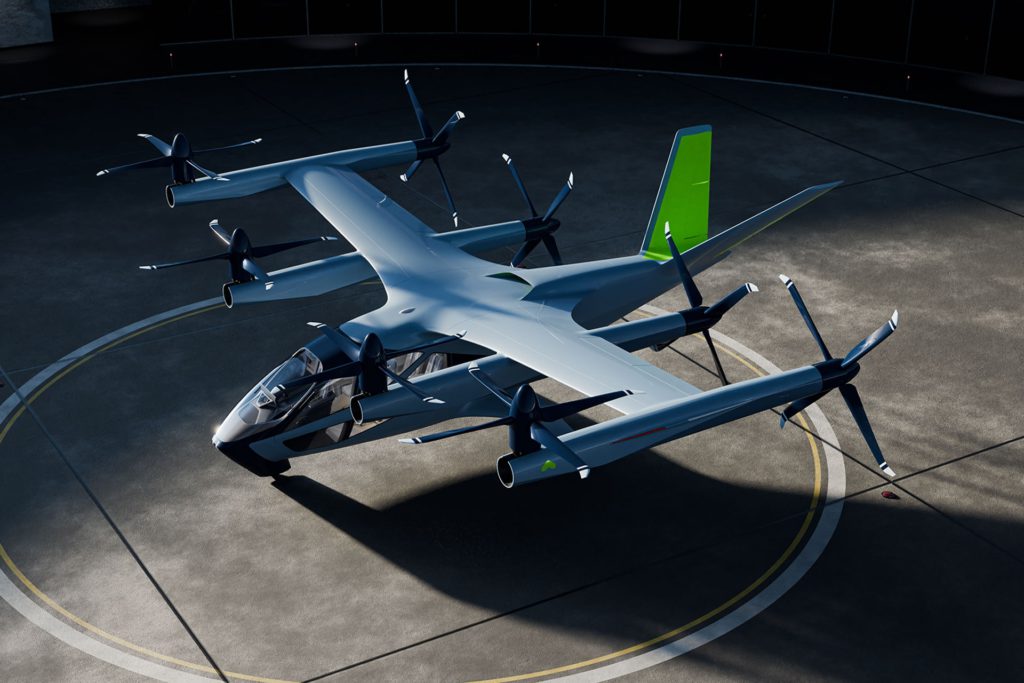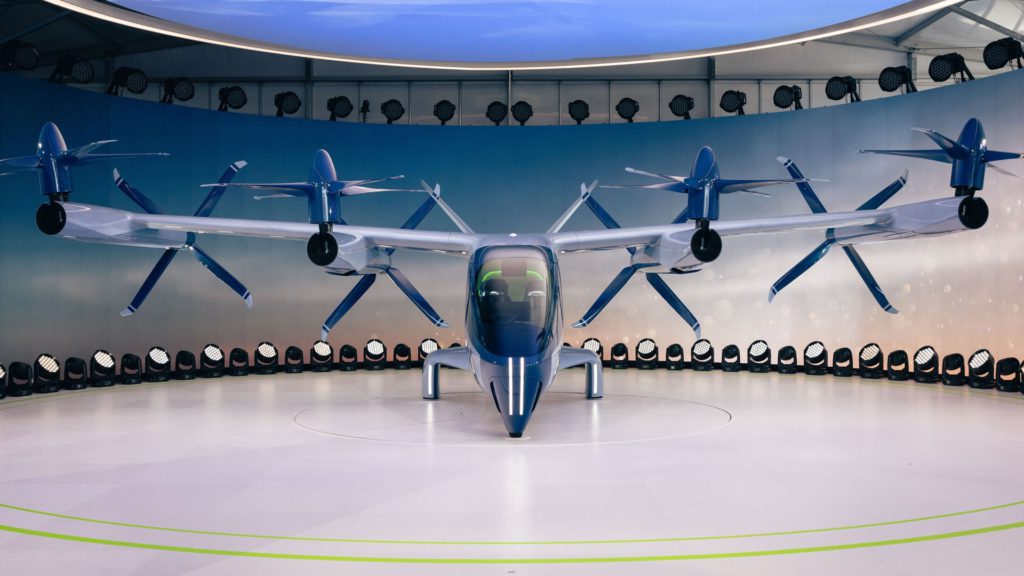This story originally appeared in Open Source, our weekly newsletter on emerging technology. To get stories like this in your inbox first, subscribe here.
This coming summer, Paris will play host to the quadrennial summer Olympics. As in past editions, it is expected to be an exuberant affair, drawing headlines not just for its significance as part of global sporting culture, but also because four new sports will be added to the roster for this year’s iteration. Yet, what’s even more noteworthy is that this year’s Olympics in the French capital will mark the debut of eVTOL aircraft, with German aircraft manufacturer Volocopter anticipated to operate a flying taxi service in the city during the games.
eVTOL, the abbreviation for electric vertical takeoff and landing, represents a category of electric vehicles that ascend and descend vertically. While variations exist, most concepts involve the use of batteries, accommodate 2–6 passengers, cover up to 100 miles per journey, cruise at speeds up to 200 miles an hour, and operate much like helicopters—albeit with significantly less noise and without exhaust. They are also colloquially referred to as flying cars, flying taxis, and air taxis, among other terms.
According to The Guardian, there are three eVTOL classifications:
- Wingless “multicopters” that rely on their rotors for both vertical and horizontal movement, best suited for shorter journeys.
- “Lift and cruise” eVTOL aircraft that use rotors to hover while using wings for efficient cruising.
- “Vectored thrust” eVTOL vehicles equipped with wings, fans, or propellers that can swivel their thrust generators.
It is widely accepted that, as things stand, eVTOL services will run between takeoff and landing pads—referred to as vertiports—rather than start and end points designated by passengers.

Why the buzz?
Volocopter’s flying taxi service for the Olympics sounds exciting, but it isn’t the sole endeavor generating buzz around eVTOL aircraft of late.
In fact, interest in eVTOL vehicles has existed for years, often touted by proponents as the future of transportation, offering people a new way to travel within and across cities.
The development of eVTOL technology is a global endeavor. Aside from Volocopter, recent times have seen the emergence of other companies like Joby and Archer Aviation in the US, Eve Air Mobility (under Embraer) in Brazil, and Supernal (backed by Hyundai) in South Korea, among others. Each of these companies has been working to get their eVTOL aircraft in the sky, hoping to be the first in the world to achieve the milestone of operating commercial eVTOL services.
There’s plenty of hype surrounding eVTOL aircraft for various reasons, but the pivotal one lies in its potential to resolve highly saturated traffic conditions in urban and metropolitan areas. Should eVTOL vehicles successfully enter the market, they could offer an additional transportation option apart from present-day choices, which typically entail driving a private car or using public transport like buses, trains, or various ride-hailing services.
The big picture
During the recent CES 2024, when Supernal and Hyundai unveiled the S-A2 eVTOL concept, both companies shared their common goal of mass producing it and bringing it to market by 2028. It isn’t the only company working on such an ambitious timeline. Other companies, such as those aforementioned, have also brought up the prospect of commercialization in the near future, some with deadlines as soon as 2025.

It’s worth keeping in mind that commercialization in most of these instances would refer to introducing eVTOL vehicles at much broader scales than shuttling visitors around Paris during the Olympics.
While their ambitions cannot be faulted, there is understandable skepticism around the prospect of eVTOL aircraft going to market before the turn of the decade.
There’s presently a two-pronged issue to solve before commercial eVTOL services become feasible: technology and infrastructure.
In terms of technology, batteries are by far the biggest problem for eVTOL technology developers. Most batteries utilized by conceptual models remain heavy and expensive, curtailing the range and limiting the cost advantages of eVTOL aircraft, particularly in comparison to other modes of transportation like cars, trains, and even helicopters.
Additionally, concerns exist regarding the infrastructure needed to support such services. eVTOL services require vertiports to operate. Resolving infrastructural limitations, in particular, can be prolonged primarily because urban renewal is typically a prolonged process. Cities that could use eVTOL services most meaningfully, to resolve congestion for instance, are likely also the ones with already-established transportation networks. Making room for vertiports and other necessary infrastructure won’t necessarily be a straightforward process.
Then, there are secondary issues related to regulation, safety, stowing, charging, and maintenance, among others, that need tackling.
When all of these issues have eventually been addressed, eVTOL companies still need to consider securing the buy-in of communities. While helicopters offer some precedence in terms of urban aerial transportation, eVTOL services would likely undertake a much larger scale that could seemingly be disruptive, thereby eliciting opposition. The only silver lining is that eVTOL vehicles are electric-powered, which could incentivize implementation and subsequent adoption.
In most countries, regulation remains stringent in the governance of eVTOL technology. While companies have generally been able to secure testing permits, flying outside of testing requires certification that is significantly harder to obtain. In the US, for example, eVTOL companies will require certification from the Federal Aviation Administration (FAA) before their vehicles can take to the skies. The FAA has already crafted a comprehensive implementation plan. Securing it will be easier said than done.
If you enjoyed reading this, you might also be interested in:
- Flying taxi obtains ‘world’s first’ type certification from China (by Nikkei Asia)
- Taking off into the future: Shenzhen to Zhuhai in 15 minutes on China’s first eVTOL air route (by KrASIA Connection)
- Chinese flying taxi maker Ehang gets approval to test drone deliveries for cargo weighing over 150 kilograms (by South China Morning Post)
